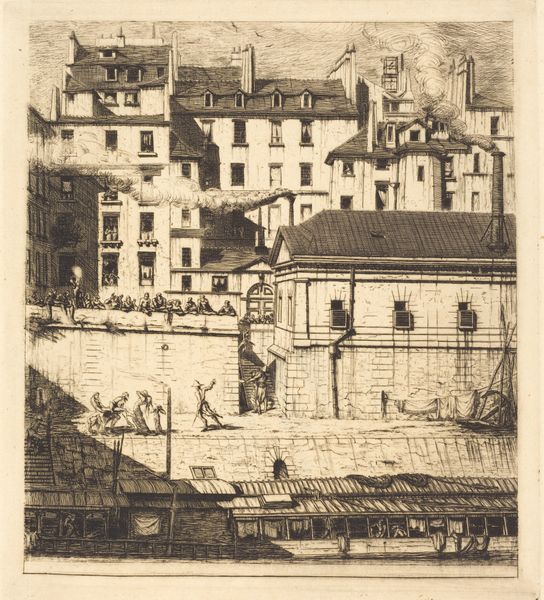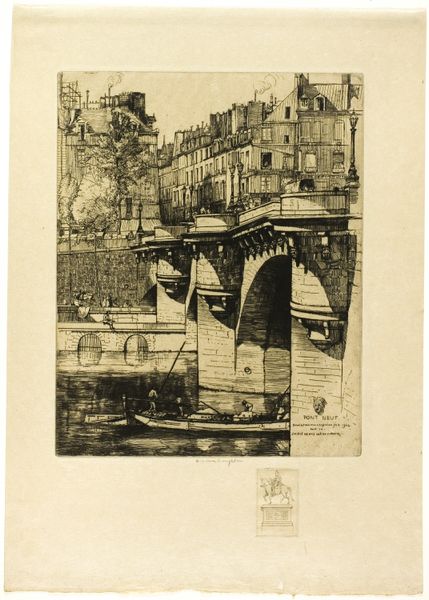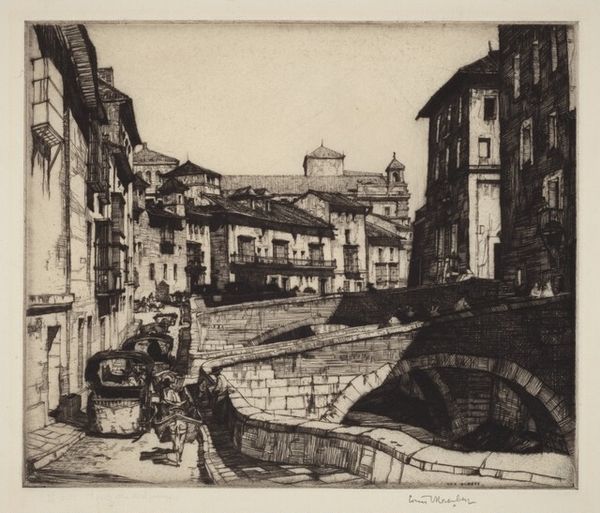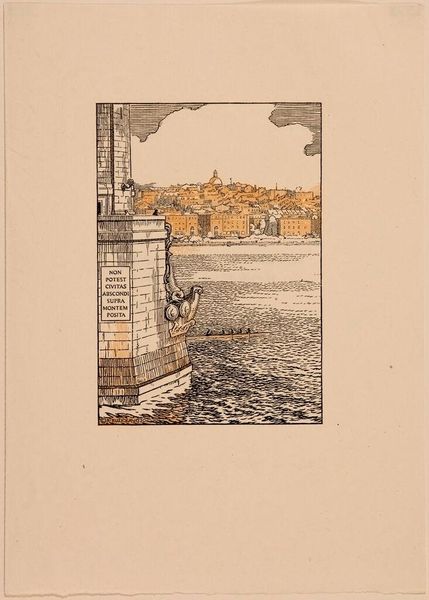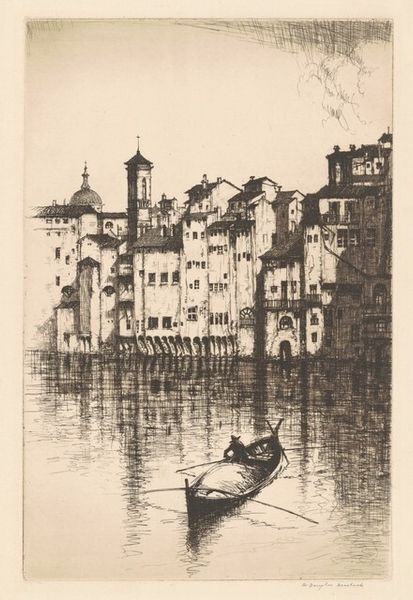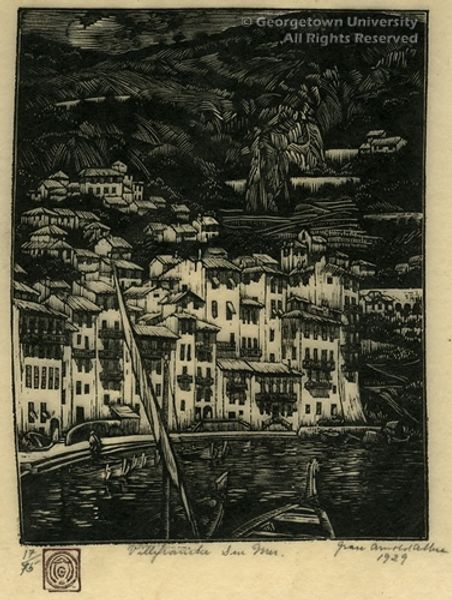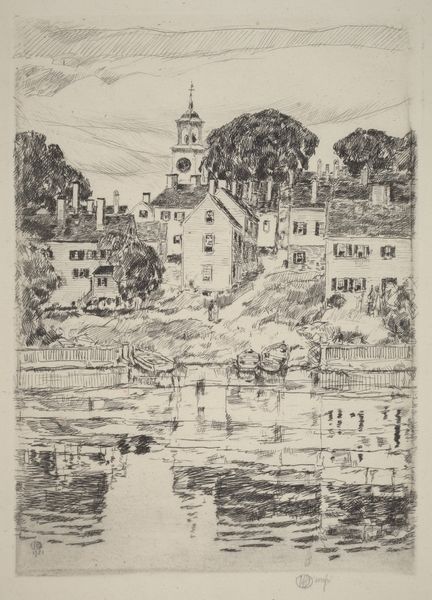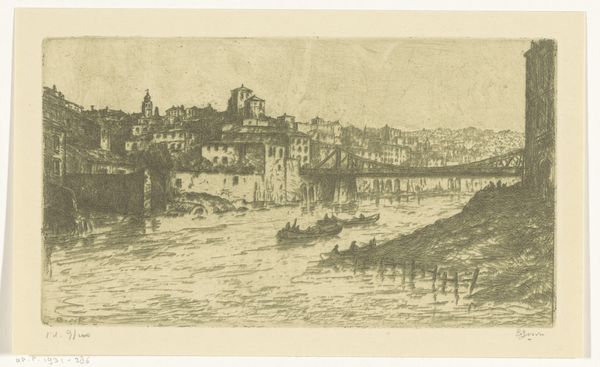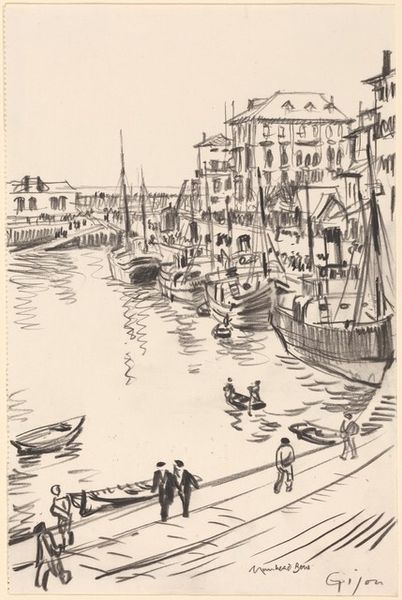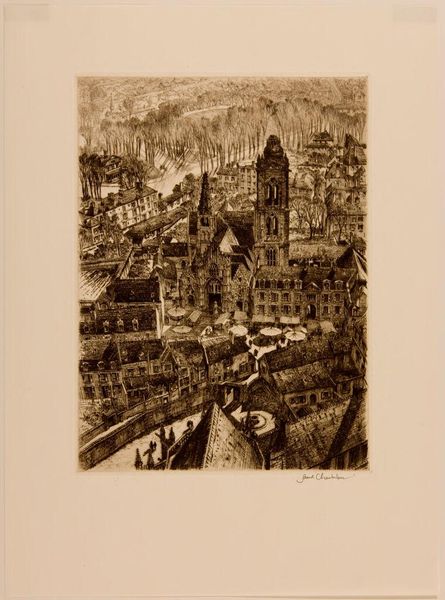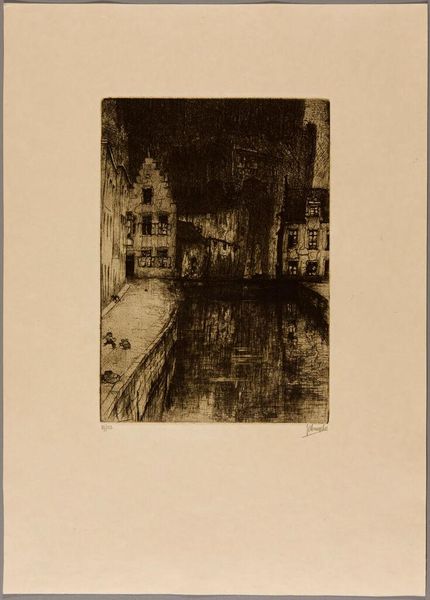
print, etching
# print
#
etching
#
landscape
#
cityscape
#
italian-renaissance
#
realism
Dimensions: plate: 36.99 × 36.2 cm (14 9/16 × 14 1/4 in.) sheet: 45.72 × 49.21 cm (18 × 19 3/8 in.)
Copyright: National Gallery of Art: CC0 1.0
Editor: This is Allan McNab's etching, Atrani, from 1926. It has a charming, almost postcard-like feel, but also a slightly unsettling, high-contrast that gives it a modernist feel. What compositional elements stand out to you the most? Curator: I am immediately struck by the intricate layering and juxtaposition of forms. Notice how McNab utilizes a high vantage point to compress the architectural space, emphasizing the interplay between the foreground, with its washing line and intimate domestic scene, and the distant, imposing structures of Atrani itself. Editor: It's like two separate realities in the same frame. Is that contrast important? Curator: Precisely. The etching’s value structure guides the eye—from the dark foreground up through the lighter tones toward the top and back down the coastal structure and up the steeple. How does that rhythmic pattern work? The dark line is emphasized in the foreground but the structure it makes – like the rooftop, and steeple and coastal edifice have distinct formal resonances Editor: So, you are saying, these formal devices invite us to find the dialogue between these architectural structures. Curator: In effect, yes, one can consider each of them as structural semiological device - drawing attention to line and space and form across a pictorial surface. The viewer is prompted to find or produce connections, dialogues or disruptions Editor: That's really fascinating. It changes the way I see the relationship between what is near and far in the work. Curator: And consider, the limited tonal range and meticulous detail contribute to an overall flattening effect. It underscores the constructed nature of the image. The subject—a place—becomes merely the means of constructing form in service of the structure of pictorial elements and inviting us to consider that structure and process and invites further contemplation on semiotic forms. Editor: I hadn't considered the "flattening effect," as you call it. I was so focused on the content and the subject. Now, looking again, it's a lesson in pure shape and composition. Curator: I’m happy you can see that too; it might be useful to see his later works. What would you suggest we note now? Editor: This really shifts my perspective, that careful consideration of structure helps highlight the artwork itself.
Comments
No comments
Be the first to comment and join the conversation on the ultimate creative platform.
